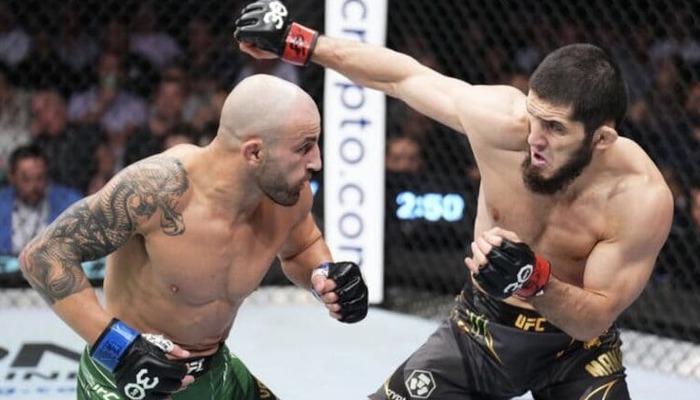
Why LeBron James broke the NBA’s all-time scoring record, and why Michael Jordan did not
Jordan may have been a better scorer, but factors prevented him from breaking the scoring record.
LeBron James and Michael Jordan are the two greatest players in NBA history, but when compared strictly as scorers, Jordan is almost inarguably the superior talent. Jordan averaged 30.1 points per game across 15 NBA seasons compared to “only” 27.2 for James in his 20. At his peak, Jordan averaged over 37 points per game. James has a career-high of 31.4. James is the better passer and rebounder of the two. Defensively, it’s a toss up. But if you need a bucket, you’d take Jordan without thinking twice.
It’s somewhat surprising, then, that Jordan didn’t ever seriously challenge for the NBA’s all-time scoring record. He finished his career roughly 6,000 points behind Kareem Abdul-Jabbar. Yet it’s James who became the top man on Tuesday. Furthermore, he will now presumably tack-on a few more thousand points before he hangs up his Nikes for good, turning a record that most thought would probably never be broken into one that will never be broken. So how did that happen? Why didn’t Jordan, universally considered the greatest scorer in NBA history, break Abdul-Jabbar’s record? Well, there were a few factors at play. In short, circumstances aligned for James in a way that they didn’t for Jordan.
Longevity: Jordan didn’t play enough
We covered one of the basic explanations for Jordan’s career numbers in the first paragraph. He played 15 seasons. James is at 20 and counting. Two of those Jordan seasons came when he played for the Washington Wizards, after his second NBA retirement when he was well past his physical prime. All told, that means that James has arguably had seven extra seasons of superior physical ability to work with. Some of that is on Jordan. Some of it was merely timing.
Let’s start with the obvious. James reached the NBA at 18. Jordan debuted at 21. Jordan technically could have tried to start his career straight out of high school, but it wouldn’t have been advisable. Moses Malone was the only player to successfully make the jump from high school into professional basketball when Jordan was a teenager, and even he did so in the ABA rather than the NBA. Even if there was more of a precedent for Jordan to follow, he wasn’t exactly a sure thing at that stage of his career.
Jordan didn’t play varsity basketball until his junior year of high school. By that point, James had already been proclaimed “The Chosen One” on the cover of Sports Illustrated. He would have been the No. 1 overall pick for years before he was ultimately eligible to declare. Jordan grew into a top prospect with time, but arrived at North Carolina as a skinny teenager with a broken jump shot. Even if he’d made it to the NBA at 18, he would have needed years of development to grow into a superstar. He averaged over 27 points per game as a rookie, but remember, at the age of 21, James averaged 31.4. LeBron grew up in an era more favorable to high school stars, but he also had significant physical advantages over a young Jordan. That gap closed with time, but it explains the head start James got.
That head start was out of Jordan’s control. However, we should note that he missed his age-30 season and most of his age-31 season due to a mid-career retirement. He retired for good at 35 and skipped his age-36 and age-37 seasons. At his peak, Jordan was scoring roughly 2,500 points per season. Give him all of those years back and he likely sets a record that James would still be chasing.
Shooting: Jordan came before the 3-point revolution
Here’s a startling statistic: Jordan made only 581 3-pointers in his career. James has made 621 during his time as a Laker alone. James was the more accurate 3-point shooter, making 34.4 percent of his career attempts to Jordan’s 32.7 percent, but that gap is relatively meager. Volume is where the difference starts to add up. James has thus far scored 4,968 more points from behind the arc than Jordan.
Almost all of that can be attributed to volume. James himself has attempted more than triple the number of 3-pointers that Jordan did, but that is largely due to league-wide trends. The average NBA team attempted 12.7 3-pointers per game in Jordan’s final season with the Bulls. Both Stephen Curry and James Harden have had individual seasons in which they’ve attempted that many 3-pointers. The average team in the current NBA attempts around 34.2 3-pointers per game.
This has a number of ripple effects that mattered towards Jordan’s point total. Had he existed in an NBA that favored 3-point shooting, he might have further developed the skill himself. Even if he hadn’t, he likely would have benefitted from the spacing modern ball-handlers enjoy. Of course, James didn’t benefit from the league’s old, scorer-friendly illegal defense rules, so both players had their own obstacles to overcome.
If you look at Jordan’s statistics, you’ll notice a slight bump in his 3-point shooting numbers between 1994 and 1997. During this stretch, Jordan attempted 3.1 3-pointers per game and made 40.4 percent of them. Why? Because the NBA shortened the 3-point line during that stretch to try to tilt the game towards offense. This should give you some idea of what Jordan might have been in an NBA that was friendlier to shooters. He was never going to be a high-volume 3-point shooter, but when the league incentivized shooting, he did so at a very high level.
Article Source
https://www.cbssports.com/nba/news/lebron-james-eclipses-kareem-abdul-jabbar-and-michael-jordan-on-the-same-magical-night/
Other Interesting Articles
 5 Best Online Card Games You Should Try
5 Best Online Card Games You Should TryFeb 8, 2023











